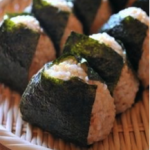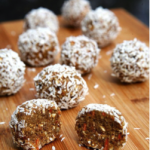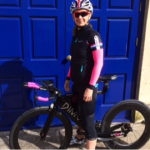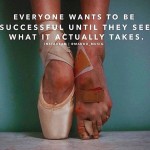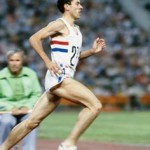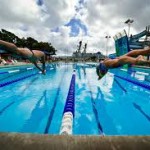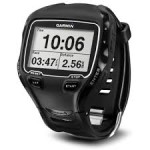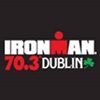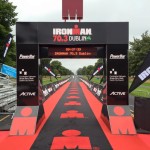In her first interview of what is going to be a regular feature, Coach Jess interviews Coach Beth following her Ultra distance triathlon.
Jess: What made you choose to undertake this challenge?
Beth: First of all, let me say that I am honoured to have a double Olympian asking me questions about my weekend! So, here goes - I had been doing Ironman for a few years and was growing a bit bored, so I decided to take a year off from long distance to do more fun events... then I read a book that changed my mind. The Race Within by Jim Gourley that describes the world of Ultraman and it altered the course of my life.
Jess: Haha I might have raced the Olympics but I've never raced an Ultra distance triathlon! So in terms of the training what in general did you do? Did you start from a good base and how did your Taper week look?
Beth: Having an active life combined with the consistent training from years before, I felt like I had a pretty good base to build up to the distances – and I am built more for endurance than speed. Training was a lot of swimming (pull buoy and paddles) gradually building to one big session and 3-4 smaller sessions / week, tons of cycling, a lot was done on turbo because of bad weather this year, but fortunately I had 1 week in Mallorca for the Performance Edge Tri Camp and another 10 days Performance Edge Tri Camp in Annecy, France really hitting specific long rides with plenty of climbs on the bike. Running was a bit hit or miss with knee issues and hip issues, but keeping the physio and massage work up along with good technique when I did run helped get me to the start line. My longest swim was 10km in the pool, 112-mile cycle at Long Course Weekend and marathon at Long Course Weekend. Taper week consisted ofboxing up and moving house, 7 hour drive to Scotland, a few turbos and runs – then a 6 hour drive to the race. But I did get some swimming and a turbo inThe main thing was to remain focussed and positive, I know I put in the hours and training – meditating on the good things put everything into perspective.
Jess: What were your biggest concerns going into the race
Beth: Swimming in a wetsuit and cycling 180 miles. Apart from that – no worries haha!
Jess: How did you plan to mitigate those concerns?
Beth: When I say I swam a lot, I swam A LOT. Ask Neil, I was in the pool almost every day and those sessions were getting my body ready to swim 10 km in a wetsuit. I felt so confident by race day – I felt that I could have kept going for another 10k. Prepared for the cold with a neoprene swim cap with chin strap, which I wore in the pool (nerd) and wore around the house to get comfortable with it (NERD).
I lived on my bike. I got very comfortable in the saddle – I 'only' cycled 112 miles but it was in Wales for the LCW so it was plenty hard and I felt ok with that.
Jess: I know you are vegan, Beth so how did you plan your nutrition strategy and how did that plan work out?
Beth: Well, you can plan all you want – but come race day ANYTHING can and will happen! I had planned on water and Xendurance Fuel 5 to drink. And ClifBars, Clif Builder Bars, Clif Shots and Clif Bloks for the bike ... Yes, I was sponsored and Yes I consumed boxes upon boxes during training. For the run, I basically filled a plastic tub with any kind of food that I thought I would fancy... veg crisps, pea snaps, chocolate bourbons, Clif bars, chocolate, miso soup. Pretty much anything I thought I might like to eat on a long run.
Jess: Day One consists of a 6 mile swim at Bala which I know from my triathlon days is cold followed by a mountainous 90 mile bike ride; how did Day One go?
Beth: Day One began with me starting my period at 3 AM. GREAT. I downed the paracetamol and hoped for the best! The lake was almost perfect – just small choppy waves and not too cold (I started to feel the cold at about 7k – I tried to pee more and make sure to get the soup every 2k).
I got out behind Marco and Mikel in 3rd place and had a 20 minute transition trying to warm up. Meanwhile, Iñigo got out in 4th and on the bike while I was sitting in transition (a special van for the woman) drinking soup and trying to get my kit on. Once on the bike, cramps were debilitating and couldn't take food or drink. I knew I had a cushion of time to get the bike done so I wasn't too stressed out. My crew were stressed out though! Trying to get me to take something other than a sip of Coke must have been frustrating as hell! They did a great job of getting me to the finish line. Carlos and Toni both caught up to me and passed me around mile 45. So I finished Day One in 6th place.
Jess: I saw the photos from Day Two, the 170 mile bike and the weather looked truly atrocious! How did you mentally keep going on that day and what kept you positive and driving to keep going?
Beth: The forecast was for heavy rain from 11 AM through the afternoon, so I was prepared for at least half of day 2 to be in the wet. When they say heavy rain in North Wales they mean HEAVY RAIN. I thought there was something up when I showed up at the start and it was already raining! I then mentally prepared for being wet all day. I had put an entire change of kit and extra jacket in the vehicle (hindsight I would have put a lot more in). Mileage management in my head was to get to 100 miles, then ride like it was an Ironman race... easier said than done! To be honest, I tried not to focus too much on the elements – I started counting my pedal strokes, singing songs – although I could only remember 2 songs... 2 songs! how ridiculous. And waiting for those glorious times I could see the high viz vests of my crew waiting for me.
Jess: Was that a looped course on Day Two?
Beth: Yes, one big ass loop haha... We all started at 7 AM in order of completion of day 1 – I stayed with the group for a couple of miles before they shot off – I then caught up with Carlos and we passed back and forth for a while before the wheels came off (figuratively) for me.
Jess: How did you recover from those sessions prior to the 52 mile run on Day Three?
Beth: I cannot stress the importance of a great crew enough. All I had to do was swim, bike and run – these guys took care of everything else... Made sure I was eating and drinking during the event – marched me to a warm bath and protein/carb shake upon finishing – so I didn't have to think or do anything else.
Jess: I saw a photo with you doubled over at the start of Day Three; it didn’t look like the way to start a 52 mile run!
Beth: I woke up feeling absolutely sick – I couldn’t eat my porridge, I did manage a peppermint tea, but was not feeling like running 1 mile, let alone 52! If you look closely at the race photos I will be clinging on to a couple of rice cakes for dear life.
Jess: Were there any surprises during the race that you didn’t expect?
Beth: Each day there was a special obstacle – or as Neil calls them, opportunities. So each day I took the opportunity to rise above and overcome.
Jess: What did it feel like to finish? How were the celebrations?
Beth: As with every other day, the guys who had long finished all came out to welcome me to the finish line... I just felt relieved it was over and I could lie down now. I was hugged and congratulated by everyone... all the other racers, their crews, their families, the race organizers. I was handed a big glass of beer and that was that! After a quick bath we were off to the finishers ceremony- many beers and lots of food later we exchanged speeches and t shirts, compared stiffness of legs (I think I won... or lost, I'm not sure). We were invited to Barcelona, Bilbao and Milan – Long live UMUK family
Jess: How are you feeling now?
Beth: Surprisingly good! I was in the pool three days after finishing. My feet and ankles are a bit swollen – I'm a bit sore all over, but really not as bad as I would have thought. The key is compression, warm baths, hydration and moving around. Training the rest of this week will be: 20 minute walks, some floating around in a pool, and MAYBE some 30 minute easy biking.
Jess: Finally I guess the question is, what next?
Beth: The big question! I was looking forward to a few weeks off for some R&R and not thinking about what is next... although I have thought about doing UMUK again. I am super excited to be helping out in our run camps in Spain early in 2017 and more run and tri camps in France and Mallorca later in 2017. If anyone is interested in UMUK, I strongly recommend it as an experience – and am more than happy to give pointers and tips to anyone who is looking to do it next year. Just contact us at www.performance-edge.me.










